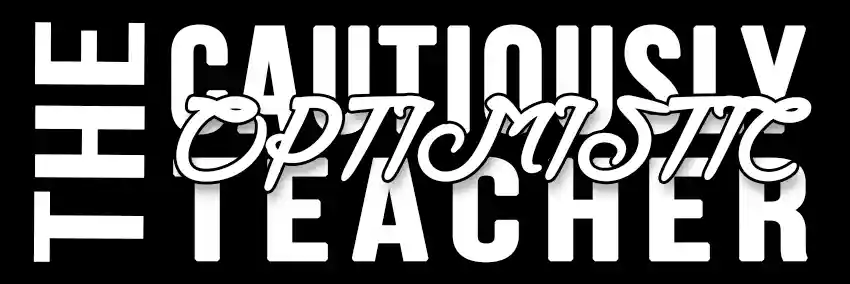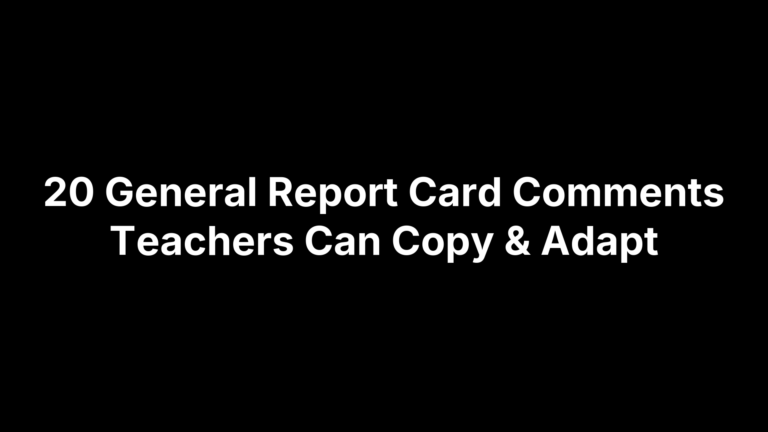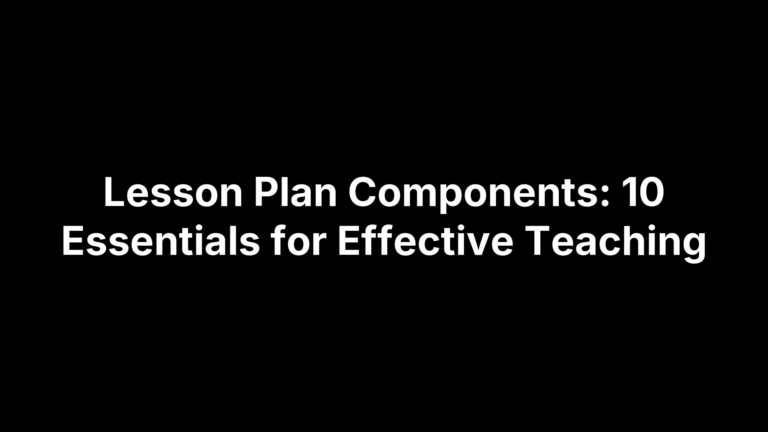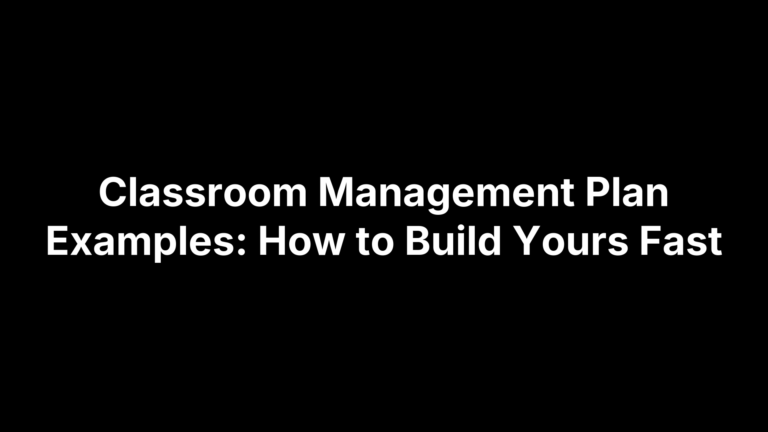Teacher Career Path: Stages, Roles, Advancement Options
A teacher career path is the sequence of roles and credentials that move an educator from pre-service training to classroom mastery and, if desired, into leadership or specialized positions. It usually starts with licensure, deepens through the early “learn-everything” years, and then branches: you might stay with students while mentoring peers, lead an entire campus, design curriculum for a publisher, or advise an ed-tech startup—all without losing the impact that drew you to teaching in the first place.
Because job titles, pay scales, and promotion ladders vary by state, union contract, and school type, this guide cuts through the noise and highlights the models that apply almost everywhere. You’ll see the four foundational stages, licensing checkpoints, in-classroom growth roles, school- and district-level leadership moves, alternative careers beyond the building, professional-development accelerators, salary realities, and a step-by-step framework for charting your own course. Ready to map your journey? Let’s start with the stages.
The Four Foundational Stages of a Teaching Career
Every district labels its rungs a little differently—“resident,” “novice,” “proficient,” “master,” and so on—but most versions of the teacher career path share the same four milestones. Think of them as a progression of expanding impact: first you master core pedagogy for one classroom, then you refine and scale that expertise to benefit entire teams of students and adults.
| Stage | Approx. Years in Stage* | Primary Goals | Common Titles |
|---|---|---|---|
| 1. Pre-Service / Residency | 0–2 | Complete prep program, pass licensure tests, build a teaching toolkit | Teacher Candidate, Resident, Intern |
| 2. Beginning Teacher | 1–3 | Establish classroom management, meet induction standards, survive workload | Probationary Teacher, Year-1 Teacher |
| 3. Proficient Teacher | 3–7 | Consistently raise achievement, iterate curriculum, lead small teams | Tenured Teacher, Grade-Level Lead |
| 4. Highly Proficient / Distinguished | 5+ | Innovate instruction, coach peers, influence policy | Master Teacher, National Board Certified |
*Numbers reflect national medians; union rules and alternative programs may shorten or lengthen each phase.
Stage 1: Pre-Service / Residency
Your launchpad is the preparation program—usually a bachelor’s or post-baccalaureate sequence that mixes coursework in pedagogy, content, and child development. The culminating requirement is a semester (or full year in urban residencies) of student teaching under a cooperating teacher. Action steps that pay off later:
- Request weekly feedback focused on one specific competency (e.g., questioning techniques).
- Log field hours accurately; states often mandate
≥600supervised hours for full credit. - Treat stipend paperwork like a real paycheck—build budgeting habits now.
Finishing this stage means you’ve passed required Praxis/edTPA exams and secured that coveted initial license.
Stage 2: Beginning Teacher
Induction can feel like drinking from a fire hose: lesson planning, grading, parent communication, IEP meetings—all while your name is still on a provisional credential. Lean on supports that districts typically fund: a formal mentor, release periods for observations, and Professional Learning Communities (PLCs). Common pain points are classroom management and time triage, so leverage tech tools (auto-graded quizzes, AI worksheet generators) to claw back evenings. Document growth evidence—student work samples, observation notes—because many states tie probationary renewal to demonstrated progress during years one to three.
Stage 3: Proficient Teacher
By now you hit stride: routines hum, assessment data guides instruction, and your students’ gains are reliably above district benchmarks. This credibility unlocks mini-promotions without leaving the room. You might pilot a new literacy curriculum, chair the 5th-grade team, or sponsor the robotics club. Each role builds leadership artifacts—meeting agendas, PD slide decks—that later bolster applications for coaching or administrative posts. Continue honing differentiated instruction and data-storytelling; both are currency in grant proposals and performance evaluations.
Stage 4: Highly Proficient & Distinguished Teacher
In the final stage you operate as a multiplier. Hallmarks include consistent “exceeds expectations” evaluations, student growth scores in the top quartile, and a habit of mentoring colleagues. Many teachers cement this status through National Board Certification: four portfolio entries plus a computer-based assessment that together cost about $1,900 (most districts subsidize). Districts often attach stipends—$2,000–$7,000 annually—to titles like Master or Model Teacher, and schedules flex to include coaching periods. From here, branching options abound: remain a classroom sage, transition to instructional coach, or test leadership waters via summer school principalships.
Licensure, Certification, and Continuing Education Milestones
Every rung on a teacher career path is gated by credentials. Licensure proves baseline competence, advanced certificates document accomplished practice, and graduate credits often trigger salary lane jumps in union contracts. Because requirements differ by state, think of the following milestones as a menu: you will probably hit each category, but the exact recipe—tests, coursework, renewal cycles—varies.
Traditional State Certification Route
Most teachers still follow the classic sequence:
- Earn an accredited bachelor’s degree that includes a state-approved teacher-prep program.
- Pass content and pedagogy exams (
Praxis II,edTPA, TExES, or CSET depending on state). - Clear fingerprint/background checks and child-protection trainings.
- Receive an Initial or Provisional license, good for 1–5 years.
Snapshot of variation: California waives basic-skills testing for high GPA candidates, while Texas requires two TExES exams for subject plus pedagogy. Know your state’s portal; missing a single fee or transcript can delay hire dates.
Alternative Certification & Residency Programs
Need a faster on-ramp or already hold a non-education degree? Options include:
- Urban teacher residencies that pair a yearlong paid apprenticeship (
≈$25Kstipend) with evening master’s courses. - District “Grow Your Own” internships that issue emergency certificates after a summer boot camp.
- National programs like Teach For America, which provide intensive summer institutes and two years of coaching.
Pros: earn a paycheck sooner, tuition assistance, high-need placements. Cons: heavier first-year load, commitment clauses (often 2–3 years) and in some states a separate set of exit exams to convert to a standard license.
National Board Certification & Micro-Credentials
For accomplished teachers eyeing leadership credibility, National Board Certification is the gold standard:
- Four portfolio entries (student work, video, reflection)
- Computer-based assessment of content knowledge
- Fee roughly
$1,900, renewable every 5 years
Districts in 32 states offer salary bumps ($2K–$10K) or automatic renewal perks. Shorter, stackable micro-credentials—e.g., Google Certified Educator, ISTE Certification—can also pad résumés and sometimes count toward professional development hours.
Renewal, Endorsements, and Graduate Degrees
Licenses don’t stay fresh forever. Typical renewal cycle: every 3–5 years, requiring ≥150 Continuing Education Units (CEUs) or clock hours. Use those credits strategically to add endorsements in ESL, Special Education, or STEM; each extra code widens job mobility and stipend potential.
Graduate study remains the biggest salary accelerator. Compare:
| Degree | Typical Years | Avg. Salary Lane Bump* |
|---|---|---|
| M.A./M.Ed. | 2 | $3,000–$8,000 |
| Ed.S. | 1–2 | $6,000–$12,000 |
| Ed.D./Ph.D. | 3–5 | Variable; often prerequisite for district cabinet roles |
*National medians; union contracts govern exact figures.
Choose programs aligned with your next goal—curriculum leadership, administration, or specialized instruction—so every tuition dollar also pays career-path dividends.
Growing Within the Classroom: Roles That Elevate Practice
Advancing on a teacher career path doesn’t have to mean kissing morning meetings and class jokes goodbye. Many districts now build layered ladders that let accomplished educators keep their fingers on the pulse of student learning while expanding influence and income. The through line: deeper expertise and peer leadership, not managerial paperwork.
Classroom Teacher Progression: Intern → Co-Teacher → Lead → Master
Most districts recognize at least four rungs inside the classroom itself:
| Internal Title | Core Responsibilities | Typical Add-On Pay* | Evidence Needed |
|---|---|---|---|
| Intern / Resident | Partial lesson delivery, daily reflections, targeted observations | Stipend or tuition waiver | Cooperating-teacher evaluations |
| Co-Teacher | Shares full load, co-plans units, small-group reteach | Base salary | Joint lesson artifacts, growth data |
| Lead Teacher | Owns roster, mentors beginners, chairs PLC | $1,000–$3,500 | Team agendas, benchmark gains |
| Master Teacher | Models lessons, analyzes schoolwide data, designs PD | $2,500–$7,500 | Video demos, peer impact surveys |
*National medians; actual figures hinge on contract language.
What shifts at each rung? Increasing autonomy, data literacy, and adult-learning skill. Keep a running portfolio—unit revisions, student work, PLC minutes—so when the next posting opens, your evidence is ready.
Content or Grade-Level Specialization
Becoming “the AP Biology person” or the go-to 3rd-grade literacy guru amplifies your impact without a title change. Steps that convert expertise into opportunity:
- Complete advanced coursework or an endorsement in your niche.
- Volunteer to pilot new curriculum or assessment tools—publish results at a faculty meeting.
- Present a 20-minute micro-PD; record it and upload to your digital portfolio.
Benefits go beyond ego boosts: specialists often receive supply budgets, reduced duty periods, or first dibs on conference slots, all of which feed future leadership bids.
Mentoring, Coaching, and Peer-Collaborative Roles
District leadership frequently cites peer coaching as the highest-ROI professional development, so they fund positions like Model Teacher, Peer Collaborative Teacher (NYC), or Resident Coach. Core skills:
- Adult learning theory & facilitation
- Non-judgmental observation scripting
- Data “storytelling” for goal-setting conversations
Sample weekly schedule for a Model Teacher (still at 1.0 FTE):
| Day | Student Periods | Coaching Blocks | Common Planning |
|---|---|---|---|
| Mon/Wed | 4 | 2 | 1 |
| Tue/Thu | 3 | 3 | 1 |
| Fri | 2 | 2 | Schoolwide PD |
Notice the lighter Friday teaching load—time reallocated for walkthrough debriefs and strategy sessions. Stipends vary, but a 10-15 % salary bump is common, and some districts add release periods in lieu of cash.
If your district lacks a formal pathway, create one implicitly: mentor a novice, share your classroom data story at a board meeting, or pilot an AI differentiation tool. Leadership often follows demonstrated initiative.
Moving Into School and District Leadership
After you’ve sharpened your craft and tested the waters as a mentor or master teacher, the next step on a teacher career path may be formal leadership. These roles trade most—or all—of your classroom hours for the chance to shape instruction, climate, and policy at scale. Some positions remain tightly tied to teaching practice (instructional coach), while others lean into operations and compliance (assistant principal, superintendent). Understanding the differences helps you pick a ladder that fits your skills, values, and tolerance for email volume.
Instructional Coach, Specialist, and Coordinator Positions
Instructional leadership slots keep you close to pedagogy without the discipline referrals and bus schedules that come with an admin badge.
- Core duties: analyze benchmark data, model lessons, plan PD days, curate resources, and facilitate instructional rounds.
- Qualifications: consistent “highly effective” evaluations, a track record of student growth, and typically a Master’s in Curriculum & Instruction or a related field.
- Day-to-day realities: fewer nights at sporting events, but plenty of spreadsheet dives and adult-learning sessions.
- Pay bump: 5–10 % over teacher salary plus extended-year stipends for summer work in many districts.
If you crave coaching but still want a class, lobby for hybrid schedules—three periods of teaching, three of coaching—which many large districts now support.
Assistant Principal and Principal Track
Moving from coach to campus administration shifts the spotlight from instruction to whole-school management.
- Earn an administrative or educational leadership certificate (internship hours required).
- Serve as assistant principal (AP) to learn budgeting, discipline systems, and staff evaluations.
- Apply for principal roles once you’ve demonstrated school-improvement results and community rapport.
Pros: ≈$15K–$45K salary boost, authority to drive culture, larger professional network.
Cons: 12-month contract, night and weekend duties, high accountability for test scores and safety. To keep instructional chops fresh, many successful principals still demo lessons during walkthroughs.
District-Level Administration
Beyond the building, central-office roles influence thousands of students and multimillion-dollar budgets.
| Role | National Median Salary* | Core Focus | Key Skill Shift |
|---|---|---|---|
| Director of Curriculum & Instruction | $115,000 | Standards alignment, PD budgets | Systems thinking |
| Human Resources Administrator | $122,000 | Staffing, labor relations | Employment law |
| Federal/State Programs Coordinator | $110,000 | Grant compliance, Title funds | Policy analysis |
| Superintendent | $167,000 | Strategic vision, board relations | Political acumen |
*Based on 2024 AASA and BLS data; regional variance can be ±25 %.
District seats demand expertise in finance, policy, and stakeholder management—skills you can build by chairing site-based committees, pursuing an Ed.S./Ed.D., and shadowing cabinet-level meetings. Expect fewer snow-day perks but a wider platform to advocate for equitable resources and innovative programs.
Whether you step into coaching, the principal’s office, or the superintendent’s suite, leadership progression amplifies your impact—and your responsibility. Match the pathway to the parts of teaching you love most, and you’ll steer your career without losing your purpose.
Beyond the School Building: Alternative Pathways for Experienced Teachers
Maybe you’ve reached the “distinguished” rung of your teacher career path and discovered that what you love most is designing labs, mentoring adults, or arguing for better policy—just not grading 150 essays every weekend. The good news: the skills you’ve polished in the classroom—clear communication, data interpretation, people management—transfer neatly to several adjacent fields. Below are five common off-ramps that let veteran educators keep their mission while changing the daily scenery.
Higher Education & Teacher Preparation
Many districts partner with local universities, so your instructional chops already have campus currency. Roles range from part-time adjunct (evenings, ≈$1,000‒$3,000 per course) to full professor (tenure track, research load, doctorate required). Another niche is supervising student teachers, where your feedback skills become formal assessments. Pros: flexible scheduling, intellectual community. Cons: publish-or-perish pressure and grant chasing for full-time posts.
Curriculum & Assessment Development
Publishers, testing companies, and open-source collaboratives need people who understand standards and classroom realities. Typical titles: Content Developer, Assessment Writer, Alignment Specialist. You’ll storyboard lessons, write item banks, or beta-test digital interactives. Expect contract or salaried work ($65K–$100K, remote options common). A portfolio of high-impact units and data that show student growth will fast-track interviews.
Educational Technology & Product Development
Ed-tech firms court teachers who can translate pedagogy into user stories. Pathways include Instructional Designer, Customer Success Manager, or UX Researcher focused on K-12. Day-to-day tasks: scripting video tutorials, running classroom pilots, gathering feedback for engineers. Compensation is competitive ($75K+) and often includes stock options, but product deadlines can feel like finals week—every sprint.
Policy, Advocacy, and Nonprofit Work
If you relish the systems side of education, consider think tanks, unions, or state departments. Core duties: data analysis, white-paper drafting, legislative testimony, grant management. Classroom credibility helps you speak both “teacher” and “policy wonk.” Salaries vary widely ($55K–$120K) and travel is frequent during legislative sessions.
Private Tutoring, Consulting, and Entrepreneurship
Going solo offers maximum autonomy. You might launch a local tutoring service ($50–$120/hr), sell digital courses, or consult with districts on literacy or DEI initiatives. Keys to success: niche branding, liability insurance, and an LLC or S-Corp for tax advantages. The income ceiling is theoretically unlimited, but so is the hustle—client acquisition never ends.
These alternative avenues prove that stepping off the traditional ladder doesn’t mean abandoning your educator identity; it simply rewrites how, where, and for whom you make an impact.
Professional Development Strategies That Accelerate Advancement
Credentials open doors, but ongoing professional development (PD) is the engine that keeps your teacher career path moving. Districts usually mandate a minimum number of clock hours; the savvy move is to earn those hours in ways that also sharpen the exact skills your next role requires. Aim for a balanced PD diet—formal degrees, peer learning, self-reflection, and networking—so your growth is visible, documented, and immediately usable in the classroom.
Graduate Degrees, Certificates, and Micro-Credentials
A well-chosen graduate program can bump your salary lane and qualify you for leadership licenses. Before enrolling, run a simple ROI = (annual salary increase × years you plan to stay) ÷ tuition. If the number tops 1, the investment often pays. For lighter lifts, stack micro-credentials:
- Google Certified Educator
- ISTE Certification
- State literacy or STEM badges
Stacking three to five micro-credentials can equal one traditional three-credit course—and often counts toward license renewal.
Professional Learning Communities, Conferences, and Associations
Consistent peer dialogue turns PD from event to habit. Prioritize:
- Weekly PLCs focused on data protocols
- One high-impact conference per year (e.g., NCTM, ASCD)
- Membership in a content association that publishes research you can cite in evaluations
Pro tip: Submit a session proposal. Presenters often get free registration and an instant résumé line.
Building a Reflective Practice and Digital Portfolio
Reflection converts experience into expertise. Use free tools like Google Sites or Wakelet to curate:
- Two video-recorded lessons with annotated transcripts
- Pre- and post-assessment graphs showing student growth
- Slide decks from PD you’ve delivered
Link the portfolio in job applications; many hiring committees prefer artifacts over narratives.
Mentorship and Networking
Career accelerators are frequently people, not programs. Seek:
- An on-site mentor who observes you monthly
- A cross-district coach accessed via state association networks
- Online communities (Twitter #edutwitter, Slack groups, Reddit r/Teachers) for real-time problem solving
Remember to pay it forward—mentoring a pre-service teacher boosts your own coaching skills and signals readiness for leadership roles.
Pay Scale, Benefits, and Work-Life Balance Across Roles
Money isn’t the only metric on a teacher career path, but knowing the numbers helps you plan graduate loans, mortgages, and childcare. Salaries swing by district size, union strength, and cost of living, yet national medians give a useful benchmark.
Typical Salary Ranges at Each Stage
| Stage/Role | Median Salary | Contract Length | Notable Benefits |
|---|---|---|---|
| Intern / Resident | $15K–$35K* | 10 mo. | Tuition stipend, mentor support |
| Beginning Teacher | $45K–$58K | 10 mo. | Health plan, state pension |
| Proficient Teacher | $55K–$75K | 10 mo. | Annual step raises, grad lanes |
| Master/Model Teacher | $65K–$85K + $2–7K stipend | 10 mo. | Extra prep, coaching periods |
| Instructional Coach | $70K–$90K | 11 mo. | Summer PD days |
| Assistant Principal | $85K–$115K | 12 mo. | Admin differential, cell allowance |
| Principal | $100K–$150K | 12 mo. | Performance bonus, car stipend |
| District Director | $110K–$160K | 12 mo. | Travel budget, larger pension |
| Professor (Teacher Ed) | $75K–$140K | 9–12 mo. | Sabbatical, tenure track |
*Stipend instead of salary; often paired with tuition support.
Highest-Paying Jobs You Can Pursue With a Teaching Background
- School Principal
- Leadership authority
- – 60-hour weeks, night events
- District Administrator
- Six-figure pay, policy impact
- – Political pressure, 12-month contract
- University Professor
- Flexible schedule, research time
- – Publish-or-perish stress, doctorate needed
- Instructional Designer (EdTech)
- Remote options, stock grants
- – Product deadlines, less vacation
- Private Tutor/Consultant
- Earnings limited only by clients
- – No benefits, constant marketing
Balancing Compensation With Mission and Lifestyle
Chasing the top rung can double your paycheck but also your calendar. Compare hourly rates, not just annual figures, and weigh intangibles:
- Summers off vs. year-round work
- Pension security vs. 401(k) volatility
- Autonomy in entrepreneurship vs. stability in public systems
Use budgeting tools, build an emergency fund, and revisit priorities each contract cycle. Financial health and personal fulfillment can coexist when you choose roles that honor both your wallet and your why.
Mapping Your Personal Teacher Career Roadmap
No two teachers climb the same ladder, so carve out a roadmap that fits your skills, values, and real-life constraints. Treat the plan as a living Google Doc—review it every semester when contracts, family needs, or new interests surface.
Setting Short-, Mid-, and Long-Term Goals
Break ambitions into three buckets:
- Short-term (this semester): “Co-plan once a week with my mentor to sharpen formative-assessment routines.”
- Mid-term (1–3 years): “Earn National Board Certification by 2027 and apply for a peer-coaching stipend.”
- Long-term (3–7 years): “Finish an Ed.S. in leadership and interview for an assistant-principal post.”
Tag each goal with a deadline, evidence of completion, and a resources column for tuition grants or conference vouchers.
Evaluating Strengths, Values, and Passion
Ask yourself:
- Which tasks make time fly—small-group instruction, data crunching, or leading PD?
- Which values top your list—equity, creativity, stability, influence?
- What feedback do students and colleagues already give?
Match the overlap of strengths and values to role options; that “sweet spot” signals your next move.
When and How to Pivot
Warning lights that it’s pivot time include chronic Sunday dread, plateauing evaluations, or a new fascination (e.g., AI curriculum tools). Start small: schedule an informational interview, shadow a coach for a day, or earn a micro-credential tied to the target role. If interest persists, draft a 12-month transition plan with milestones—skill gaps, application windows, financial buffers—to switch lanes deliberately, not desperately.
Key Takeaways for Your Teaching Journey
A fulfilling teacher career path is built step-by-step, but the road is navigable when you keep a few guiding truths in view:
- Master the four foundational stages—pre-service, beginning, proficient, distinguished—and you’ll never wonder “what’s next?”
- Licensure and continuing education aren’t red tape; they’re leverage points for salary lanes and mobility.
- Advancement can happen inside the classroom through lead, specialist, and mentoring roles—no principal’s office required.
- When you’re ready for bigger systems impact, coaching, administration, and district leadership expand your sphere of influence (and paycheck).
- Your classroom skills translate to higher ed, ed-tech, policy, and entrepreneurship if you crave a new setting.
- Intentional professional development—degrees, micro-credentials, PLCs, portfolios—accelerates each transition.
- Balance compensation with lifestyle; the best role fits both your wallet and your why.
Need tools, templates, or AI helpers to put these ideas into action? Explore the resources on The Cautiously Optimistic Teacher and keep your journey moving forward.







